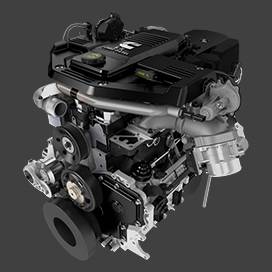សីហា . 31, 2024 03:35 Back to list
Drum Brakes
Understanding Drum Brakes A Key Component of Vehicle Safety
Drum brakes are an essential part of many vehicles' braking systems, playing a critical role in ensuring safe and effective stopping power. While they may not receive as much attention as their disc brake counterparts, understanding how drum brakes work and their advantages and disadvantages is crucial for both drivers and automotive enthusiasts.
A drum brake system consists of several key components a brake drum, brake shoes, a wheel cylinder, and various hardware like springs and adjusters. When the driver presses the brake pedal, hydraulic pressure is applied to the wheel cylinder. This pressure forces the brake shoes outward against the inner surface of the rotating drum, creating friction that slows down or stops the vehicle.
One of the primary advantages of drum brakes is their ability to generate a significant amount of braking force in a compact design. This makes them easier to install in tight spaces within the wheel assembly. Additionally, drum brakes tend to be more effective in certain driving conditions, especially in wet environments. The enclosed design of the drum helps protect the brake components from moisture and debris, reducing the likelihood of diminished performance during adverse weather conditions.
drum brakes

However, drum brakes also have their drawbacks. One significant issue is heat dissipation. During heavy braking, especially in long downhill stretches, the heat generated can cause brake fade, where the braking efficiency diminishes due to increased temperatures. This phenomenon occurs because drum brakes have a smaller surface area for dissipating heat compared to disc brakes, leading to potential performance issues under strenuous conditions.
Another downside is maintenance. Drum brakes can be more challenging to service than disc brakes. The internal components are less accessible, requiring more time and effort to replace worn-out parts or perform adjustments. As a result, many modern vehicles now favor disc brakes for their simpler maintenance and superior heat dissipation properties.
Despite these disadvantages, drum brakes are still commonly found in several applications, particularly in the rear wheels of lighter vehicles and in some commercial trucks. They offer a cost-effective solution while providing adequate braking performance for everyday driving scenarios.
In conclusion, drum brakes are a vital component of many braking systems. Their design and functionality have evolved over the years, adapting to the needs of various vehicles and driving conditions. While they may not be as prevalent as disc brakes in modern automobiles, they remain an important technology worth understanding, particularly for those seeking to maintain or upgrade their vehicles. Proper knowledge and maintenance of drum brakes can significantly contribute to vehicle safety and longevity.
-
Brake Drum Man - High-Quality Drum Brake Drums & Brake Shoes for Reliable Performance
NewsJun.24,2025
-
High-Quality Brake Drum Kamaz – Durable Drum Brake Drum & Brake Shoe Replacement
NewsJun.10,2025
-
High-Quality Brake Drum Liza for Drum Brake Systems - Superior Durability and Performance
NewsJun.10,2025
-
High-Quality Brake Drum Kamaz – Durable Drum Brake Drum & Brake Shoe Solutions
NewsJun.10,2025
-
Durable Kamaz Brake Drums High-Performance Truck Parts
NewsJun.09,2025
-
Premium Brake Drum Maz Kit with Shoes Enhanced Braking
NewsJun.09,2025
